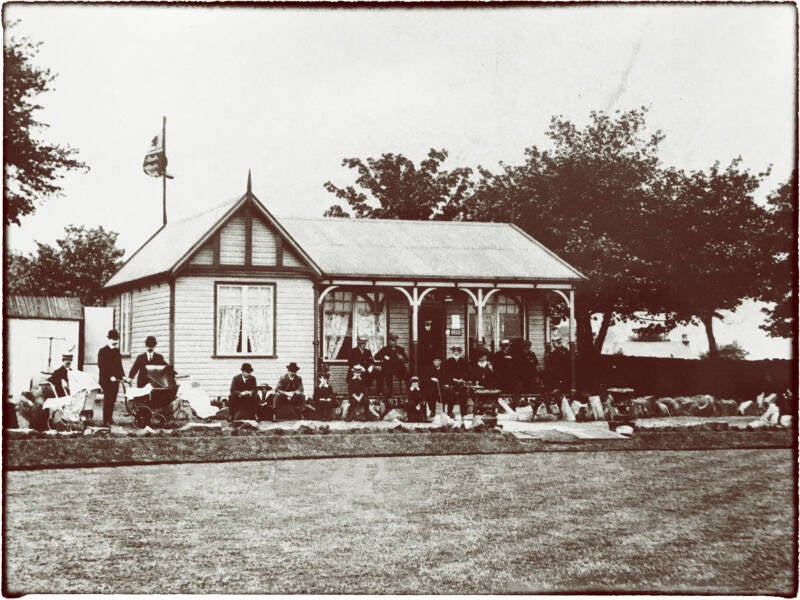Shepley Bowling Club History
Shepley Bowling Club has a long and interesting history dating back to 1907. Whilst there are numerous pictures and documents that help record this, much of the club's history sits as memories and stories that have been shared across several generations. The aim, over time, is to gather and preserve as much of this as we can here on this website.
The story so far ....
Shepley Bowling Club came to be in 1907 and our earliest records start in April of that year. It is clear that at this point in time land had been acquired, a pavilion built and initial green set out. The earliest meeting on record is a "Directors Meeting" held on Monday 29th April 1907 for the purpose of electing officers and a committee to "carry on the business of the Shepley Bowling Club"

The club was founded through the investment of these directors/shareholders but unfortunately a record of their names has not yet been found. It is highly likely that some, if not all, are included in the elected committee. We also know that over time the club purchased tranches of shares, effectively paying back the investors, until all the assets were owned exclusively by the club.
Whilst we do not know who else may have been at the Directors Meeting this is what we know about the elected officers:
Benjamin Armitage, 39, mill manager and son of local mill owner John Armitage, was elected President. Jackson Armitage, 41, tailor and outfitter became Treasurer. Joint vice-presidents were Herbert Firth, 38, woollen manufaturer, Henry Wood, 47, wool mill engine-man and Joseph Hatcher, 49, brewery foreman .
A further six committee members were elected; Joe Chambers, 38, architect and surveyor, Thomas Given, 35, woollen designer, George Washington, 20, tailor, Albert Morton, 40, master plumber and painter, Willie Brook, 35, sub-postmaster and Jonathan Lindley, 36, local quarry owner and stone merchant.
Luther Mallinson, 23, woollen salesman, was appointed correspondence secretary and Walter Goldthorpe, 43, wool merchant and tailor and Albert Halstead, 24, hairdresser were appointed financial secretaries.
At subsequent Committee meetings all efforts were focused on getting the club up and running. An advertisement was placed for a green-keeper and caretaker to "look after the green (rolling and mowing), pavilion and flower beds etc". A sub-committee was formed to "procure catalogues and prices for a lawn mower, roller, bowls and seating". A post office account was opened with Willie Brook the sub-postmaster. The pavilion was enhanced with a stove, vases, a flagpole which was kindly donated by Henry Wood, and two locks together with one hundred keys were to be purchased. In readiness for the opening day a further sub-committee known as the "Tea Committee" was formed to look after refreshments and asked if it could procure some wifely help (has anything changed). A Reception Committee was also formed, as was a Ceremony Committee.
The Shepley Bowling Club opened on July 4th 1907.
Groundsman duties were initially undertaken by a young railway porter Mr Frank Dyson, but by the start of the following season the services of a professional gardener, Arthur Nottingham, 44, were secured at the rate of 6 pence per day. Arthur was entrusted with the long term care and development of the green and it is he who we have to thank for the nature of the green today with its various gradients and contours. In addition at the start of 1908 Fred Ellis, 42, a local tailor, was employed as the pavilion caretaker and paid £2-11-6 for the season.
Discovered in our archive is a record of the 1920 B. S. Armitage Cup Competition. At over one hundred years old this is the oldest competition record we have so far uncovered. It is well preserved as you can see from the image below. We have yet to discover when this competition was established, though it is likely that as this document was deemed worth keeping it could mark the first year. The winner was H. Roebuck (Jnr) who knocked his father out of the competition in the opening round! The sharp eyed may also have noted that games were played to 31.

More history to follow but in the meantime below are some photographs that record the evolution of our pavilion, from the 1907 original, through a 1970/80s restoration and, following a devastating fire, a 1994 rebirth in its current form.

Original Pavilion

Refurbished pavilion in the 1980s

Following a fire the pavilion was rebuilt in 1994

The pavilion today.